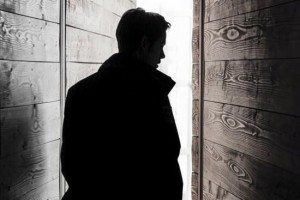31 Oct Bad camera good photos
Bad camera good photos – How to make remarkable images with cameras for beginners
Whether it’s a selfie of your new hairstyle or a picture from your delicious self-made chocolate cake – a quick snapshot with your smartphone is for many people already a part of their daily routine. However, one often wishes they had something better in their hands in order to capture beautiful motifs even under difficult conditions and to fully express their creativity. The challenge is called: Bad camera good photos!
The good news: one doesn’t have to spend a three-digit number to pay for a good camera. A single-lens reflex camera can be expensive, but if you’re not a professional photographer (or want to own only the best from the best) you can easily look for a new camera in a lower price category.
Digital compact cameras are an affordable alternative and especially interesting for beginners. However, you have to make compromises: a DSLR, for example, has a quick autofocus whereby quickly moving objects are better captured. To find a way around the problem, you should focus the camera at an object in a similar distance as the finale motif and push the shutter release just lightly.
Thus the autofocus activates. Wait until the wished motif comes closer and moves into your field of vision.
Then move the camera in the same direction; the object should be in the centre. Now push the shutter release all the way down. That way you can capture the motif in the right moment and make expertly photos with a budget camera. Correct use of autofocus – the first hin for: Bad camera good photos!
When the light just won’t work for you
As opposed to DSLRs, which work with bigger sensors and hence are able to deal with poorer lighting conditions, compact cameras are decidedly at a disadvantage. Thus you should avoid making photos in thr afternoon and use the morning and evening hours for landscape photography. The built-in flashlight can be useful, if applied correctly. In the case of strong sunlight it’s application reduces shadows, which predominantly has a prettifying effect on portrait photos. Accordingly, if the background is very light and the picture motif in the foreground is very dark, the difference can be compensated with a flashlight.

At night time you should avoid flashlight all together and instead use the night settings, which are usually present in your camera settings. The camera should also be hold steadily, preferably with the aid of a tripod or a firm underground. Moreover, disable – if existent – the image stabilizer because its constant adjustment attempts lead to shaky images. It is also advisable to enable the self-timer instead of a manual shatter release. After the picture is made, you can adjust it furthermore with exposure compensation settings. Again, in confined spaces you should consider to disable the flashlight and increase the ISO-value instead, which increases the light sensitivity of the sensor and thereby make more use of the already existing light. However, this can lead to increased noise which is why you should experiment with different camera settings. Generally speaking, the higher the ISO-value, the higher the noise, from which compact cameras are especially affected. Using the light to your advantage – the second hint for: Bad camera good photos!
Concentrate on the essentials
Cameras for beginners either have a low optical zoom or merely a digital zoom. The latter should only be used in a case of absolute necessity because of its severe cause of a loss of quality. Rather go nearer to the motif or edit the picture later on, by cutting of any unnecessary parts. If the camera also includes an autofocus, you can use the same principle as with the capturing of quick moving objects: Push the shatter release only lightly and focus on the image motif. Many cameras also provide various focusing modes, for example, the face detection AF which recognises face shapes and therefore focuses on that. A glimpse into the manual is worthwhile and you should also try many options out before using one specific setting.
Cameras for beginners admittedly require a longer time of trial and error and have less manual setting options and equipment or even interchangeable lenses. Nevertheless, their lower price, their light plus the compact build and the user-friendly handling are a real plus point and make it the first choice for home use.
If you still want, you can switch to a DSLR later on. There are many DSLR cameras for beginners (e.g. Nikon D3300 or Canon EOS1300D) for less than 400€ , which can capture as well really nice images.
Likewise, digital single lens mirrorless cameras (DSLM for short) like the Sony Alpha 5000 can be the next step in the art of photography.
Before that, however: Try a lot and don’t feel upset when a snapshot accidentally goes wrong – after all, you can easily delete it and nobody else has to ever set eyes on it. Trying a lot – the last hint on: Bad camera good photos!





